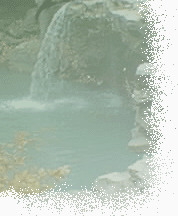
Creating
the Context
Home
Research Focus
Background Info
Research Methods
Data Submission
Results of Study
Data Analysis
Conclusion
Further Research
Guided
Research
Research Question
Background Info
Research Methods
Data Submission
Results of Study
Data Analysis
Conclusion
Further Research
Research Values
Student
Research
Doing Research
Publish
View
Tools
Discussions
Stream Teams
Water Links
|
|
Water Quality Index Research Methodologies: BOD
[BOD Research Background]
HOW TO DO A FIVE-DAY
BOD TEST
- Begin by determining the amount of dissolved oxygen in the stream water by using a Hach Dissolved Oxygen (DO) test kit as described on the "How to do a Dissolved Oxygen Test" page. Record this
amount.
- Clean and rinse the 60ml D.O. sample bottle. Carefully. refill the sample bottle with stream water. Stopper the bottle. Be sure there
are no air bubbles in the sample.
- Wrap the bottle completely with aluminum foil.
- Place the bottle in a dark room at about 20oC or 68oF (room temperature) for five days (120 hours).
- At the end of the five day period, measure the amount of dissolved oxygen left in the water by using the Hach DO test kit.
- Subtract the DO value obtained on day five from that obtained on day one. The difference is the five-day BOD.
EXAMPLE:
Day one DO level equals 14 mg/l
Day five DO levels equal - 6 mg/l
5-day BOD equals 8 mg/l*
*Report this number as your five-day BOD.
Use the rough standards below too begin interpret your
findings.
|
1-2 mg/l BOD | Very clean water, little biodegradable
waste |
| 3-5 mg/l BOD | Moderately clean water, some biodegradable
waste |
| 6-9 mg/l BOD | Many bacteria, much biodegradable
matter |
| 10 or more mg/l BOD | Very bad; someone may be dumping
biodegradable wastes into the water.
|
|

